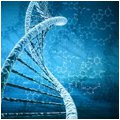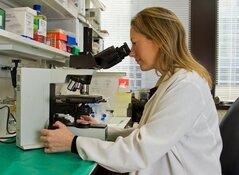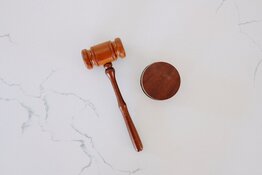
My publisher tells me that I should focus on writing dramatic headlines. Is "Curing Diabetes" dramatic enough?
If you've studied diabetes, you have almost certainly "learned" that there is no cure for the disease. Stem cell scientists, in fact, have encountered particular challenges trying to create the pancreatic beta cells that naturally produce insulin. This has led many observers to conclude that diabetics are doomed to the daily routine of glucose monitoring and insulin injections.
Fortunately, a remarkable Israeli scientist has developed an elegant and relatively simple means of genetically engineering a solution to the problem. One tiny company, incorporated in America but with roots in Israel, has what I believe will be an actual cure for many diabetics and a vastly improved therapy for those it does not cure completely.
Out of respect for the subscribers of my investment letter, Breakthrough Technology Alert, I am not going to divulge the name of the company. But I will tell you about the groundbreaking technology that could finally deliver a cure for diabetes. I'm extremely confident and excited about this company's technology, IP and management. I have not recommended the company's stock as a "buy," but I have told my subscribers to keep a very close eye on it.
Diabetes was one of the first diseases described by ancient scientists. Greek, Indian and Egyptian described the life-shortening condition, easily diagnosed by an excess of sugar in urine, and its many complications. It was not until 1922, however, that the first effective treatment, insulin, was introduced—extending and improving the lives of diabetics significantly.
Still, however, diabetes remains a dangerous condition. Even with insulin and drugs, it often entails significant health problems and suffering. It is for that reason that so many people want a cure or therapeutic treatment that enables the patient's body to produce its own insulin in a self-regulated manner.
Such a cure would allow hundreds of millions of people to live normal, healthier lives. It would also prevent the terrible complications and early deaths that often accompany diabetes. Especially for childhood-onset type-1 diabetes, which is caused by an autoimmune attack that kills the insulin-producing beta cells of the pancreas, a cure would be a stunning humanitarian advance. The benefits for adults with diabetes caused by insulin resistance would also be enormous.
In the U.S. alone, the diabetes drug market is estimated to be worth $15–20 billion (B) annually. The rest of the world offers a market at least that big. Though average levels of wealth are lower in Asia, incomes and the ability to buy more-advanced treatments is increasing. Moreover, the Far East is a particularly large market, as Asians are afflicted by diabetes to a greater degree than other races, perhaps due to the high glycemic index of the staple food, white rice. Almost one in 10 Chinese has diabetes. India has similar rates and wealthy Japan has even higher levels of the disease.
The costs of diabetes, however, are much greater than the market for therapeutics. This is a critical point because the enormous expenses induced by diabetes are the driving economic force that would make a cure so profitable.
In America alone, the direct and indirect costs of type-1 diabetes are about $15B annually. Type 2 diabetes, though less expensive per patient, costs about 10 times that amount, or $150B annually. As populations continue to age, the incidence and cost of diabetes will continue to rise. These costs are paid by families, insurance companies and social programs. The incentive, therefore, to approve and deploy a therapy that cuts costs is imperative.
With the economics of diabetes firmly in mind, we can now discuss the groundbreaking therapeutic technology under development to cure diabetes. It "reprograms" an individual's own cells to restore the ability to produce insulin.
"It's not that we're changing anything in the genetic information," the scientist leading this research explained. "It's just that we're choosing which genetic information should be expressed, so we are persuading the genetic information of the pancreas to be expressed in the liver or part of the liver. . ."
The cells remain liver cells, but they are liver cells that have pancreatic insulin-producing and regulating genes activated. Other hormones and activities necessary for glucose regulation, such as the production of organelles for insulin storage, are also activated.
It appears to me that the company utilizing this new therapy is only a year to a year and a half away from human clinical trials. Preparations are being made for regulatory approval in the US, Europe and Asia. In vitro tests have proven human liver cells can be turned into insulin factories. Preclinical animal tests have been performed, additionally, showing successful insulin production and regulation.
Remember, we aren't talking about small molecule drugs, which often have significantly different effects in different mammals. This is not the case with reprogrammed cells, so I've got real confidence that the animal results will translate directly into successful human trials. There's no real reason to believe that the procedure will not work in humans, since it has already been analyzed in numerous human liver-derived cells.
We'll be watching this space very closely. The world may be on the threshold of an amazing medical breakthrough.
Patrick Cox
The Penny Sleuth



































